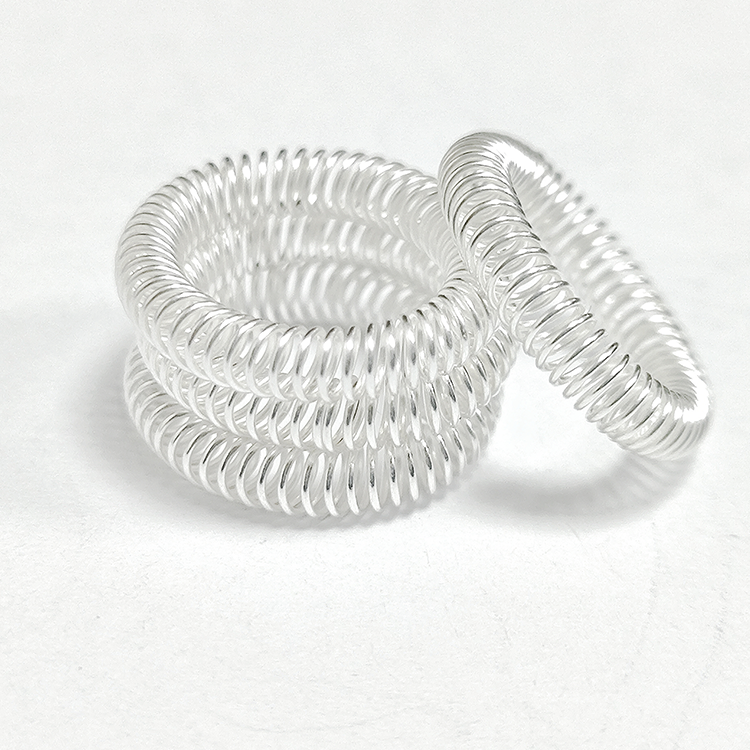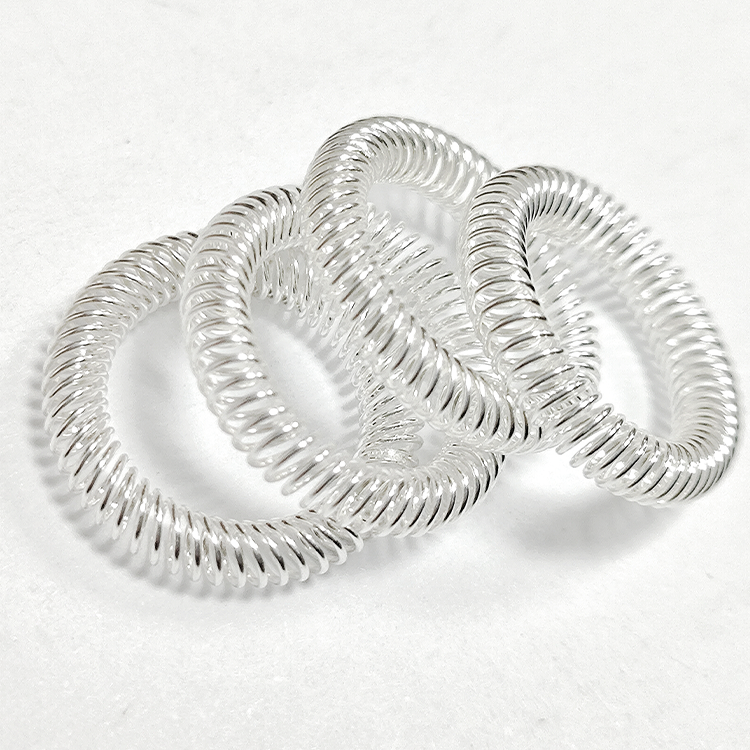Two forms of springs, conductive springs and Canted Coil Springs, are very common and important in daily life and work.However, to understand the differences between them, we have to start with their original design intentions and functional features.
First of all, for conductive springs, as its name suggests, its biggest feature is its ability to conduct current or voltage.This property makes it particularly widely used in electrical equipment and electronic products, for example, for electrical connections, carrying power and voltage, etc.

It is worth noting that in comparison, the structural design of conductive springs is relatively complex.In most cases, they are made of metal materials such as copper or iron with good texture and strong conductivity, and corresponding electrode patterns are drawn on their surfaces. The purpose of this is to ensure that the spring will not lose their function during the conductive process.
Let’s take a look at the canted coil spring. This is actually a type of spring that is widely used in mechanical equipment and is mainly responsible for providing tension or torque.The original intention of designing canted coil springs is to achieve balance, movement or adjustment of mechanical equipment.Although in appearance, canted coil springs are similar to ordinary springs, they are different in shape and angle settings, which allows canted coil springs to provide a variety of mechanical properties to adapt to various specific application environments.

In practical applications, we often find that conductive springs and canted coil springs can cooperate with each other to meet customers’ diverse needs for equipment performance better.For example, in the field of electrical equipment, conductive springs can be used as an important part of circuits to connect various electrical components; and canted coil springs can not only provide good mechanical support, but also help adjust the position of the equipment, further improving the operation efficiency of the equipment. Stability and security.